Hall i’th’ Wood Museum is a gorgeous Tudor house with a lovely history, managed by boltonlams. I went to see a tour on Heritage Open Days. That meant that we got a very rare chance to view the attic, where is believed that Samuel Crompton hid the spinning mule in late 1700s, during the outbreak of machine-breaking. It was amazing to be able to see this, as I was familiar with the history of the spinning mule and Crompton’s story from a TV show I saw a couple of years ago.
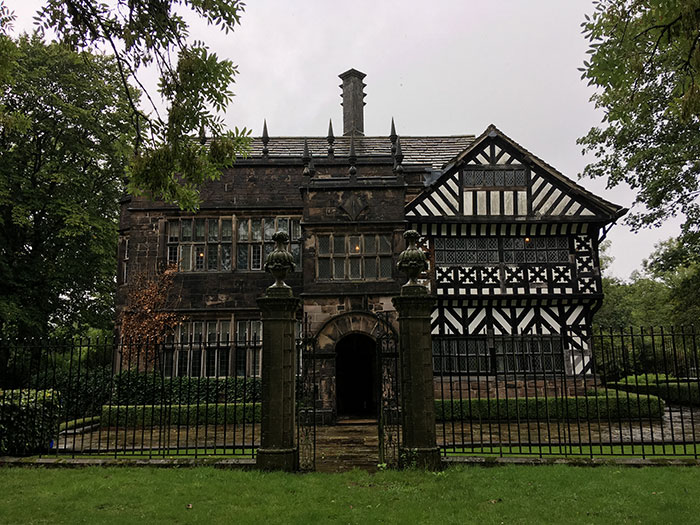
Hall i’th’ Wood is a rare surviving Tudor wooden-framed house. It was originally built as a half-timbered hall in the early 16th century. Hall i’th’ Wood gets its name from the surroundings. 400+ years ago, the area was filled with woods, thus the name of the Hall in the Woods. It’s hard to imagine that right now, with lots of buildings nearby.


The Great Hall looks lovely, spacious and airy. It was built in the 16th century too. It is where the tour started, with a short story of the house. The family that owned and built the Hall were involved in the clothing industry, bleaching woolen cloth. In the 19th century it was bought by Lord Leverhulme and made into a museum for the people of Bolton in early 1900s.
There is a fascinating spit for cooking meat. It has a lever that slowly rotates it. I’ve never seen something like this, so it was quite interesting. In one of the kitchens there is another spit, even more intriguing.

Our tour continued in the kitchen. It is one of the oldest parts of the Hall, dating back to the late 1400s. The guide told us so many details about the things on display. It was very enjoyable.

This is a cheese mould. It was placed on top of the cheese, so it would imprint and create this wonderful model. I think it’s a shame the cheese we buy today doesn’t have models like this. It’s rather stunning looking and it makes it special. The cheese press appeared on an inventory of goods in 1672, so it is over 300 years old.

This is the second spit I mentioned, a bit earlier. It is rotating due to the heat moving the blades. Isn’t this fascinating?
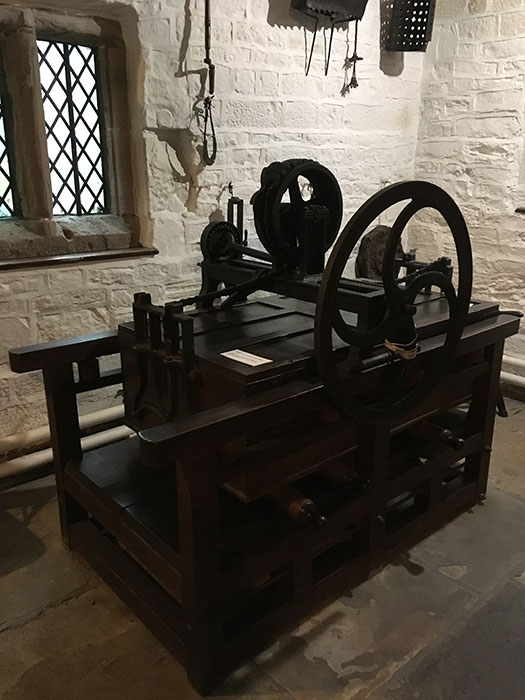
This machine was used to iron big pieces of cloth. I think it is a remarkable piece of equipment, hundreds of years old.
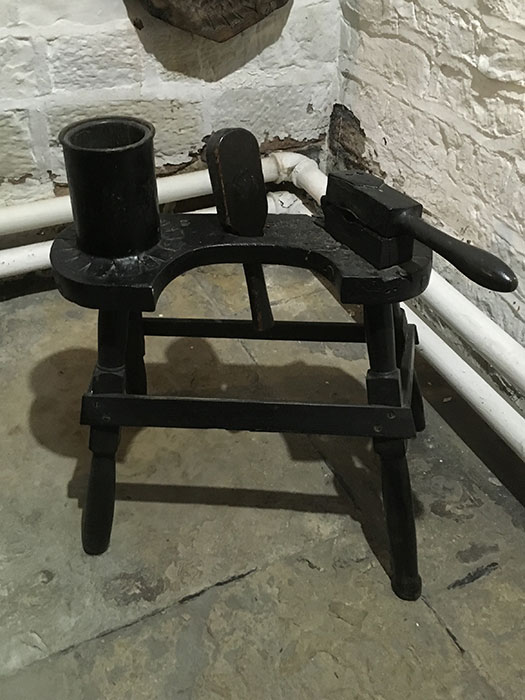
This was used for placing corks on wine bottles, another thing I haven’t seen before.


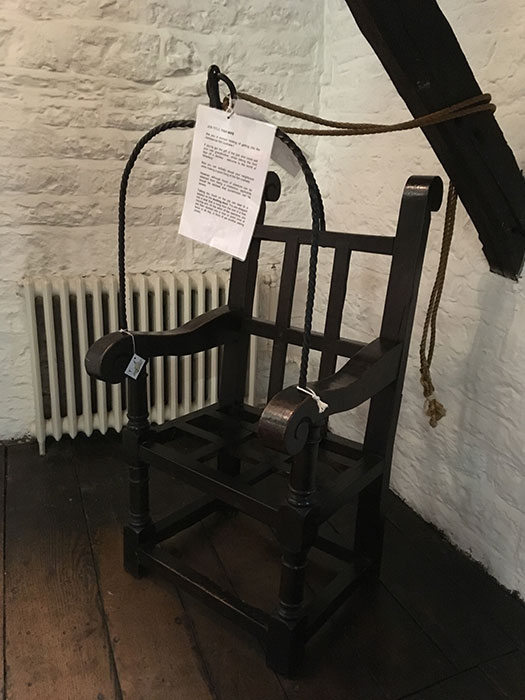
This piece of equipment was used by the Puritans. If you are wondering what it is, the chair is called a ducking stool. The annoying and disobedient wife would be placed on it. The chair would be on a free-moving arm. The wife would have been dunked into a river or pond, at the delight of the crowd gathered to see this.
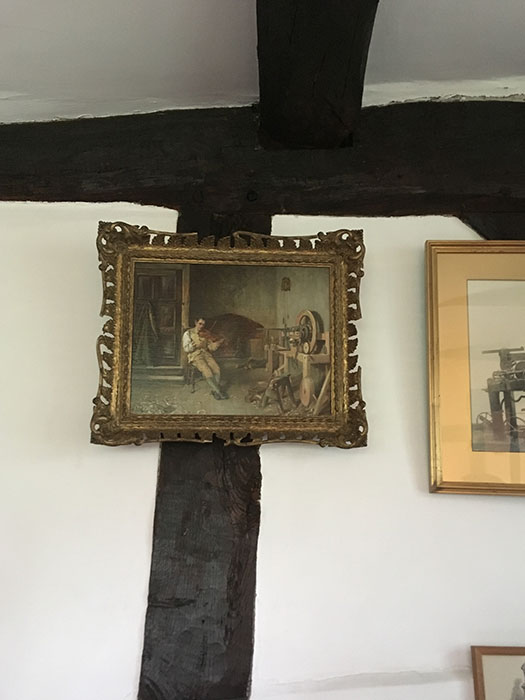
A painting of the spinning mule.

One of the rooms in which Samuel Crompton lived and worked.

This is Samuel Crompton. He invented the spinning mule. Manufacturers were eager to discover how it worked, and spied through the windows, tricked their way into the Hall, so they could see the mule. As Richard Arkwright had a patent for cloth-making machines, Crompton wasn’t allowed to get a patent for his spinning mule. He allowed manufacturers to see the machine on subscription. Only a few paid, but went on and developed spinning machines based on his designs. Crompton wanted to work for himself and refused any partnership.
In 1782 Samuel left the Hall and moved to a farmhouse where he installed two mules and two looms. He took apprentices, that ended up leaving him after receiving offers from his competitors. After receiving more money, they shared the secrets of the mule. In 1810 he appealed to Parliament for a grant. He was rewarded a grant, but with the assassination of the Prime Ministers in 1816, his case was not high on the agenda. Finally he was rewarded £5,000. He tried to invest, but didn’t find the best way to do that. In 1827, he died in poverty, at the age of 74.

This is a Spinet, dating back to the 17th century. It is more similar to a harp than a piano.

A cheese tray, on wheels, so it could be rolled on the table. How cool is that? I think it can be “invented” again and people would like one of these.
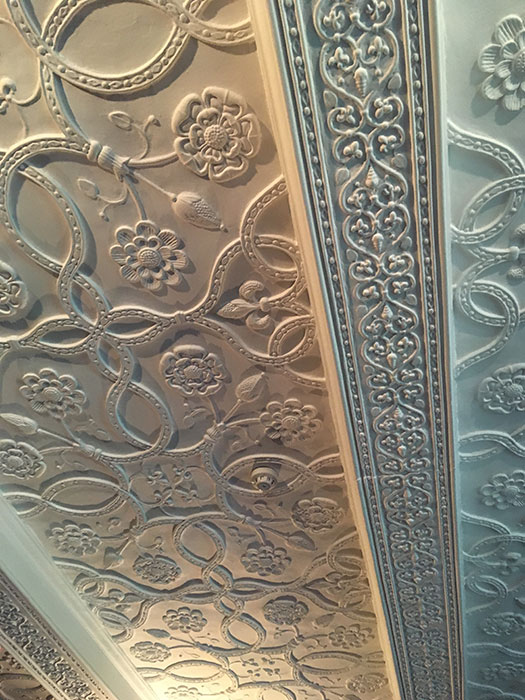
A stunning looking ceiling.
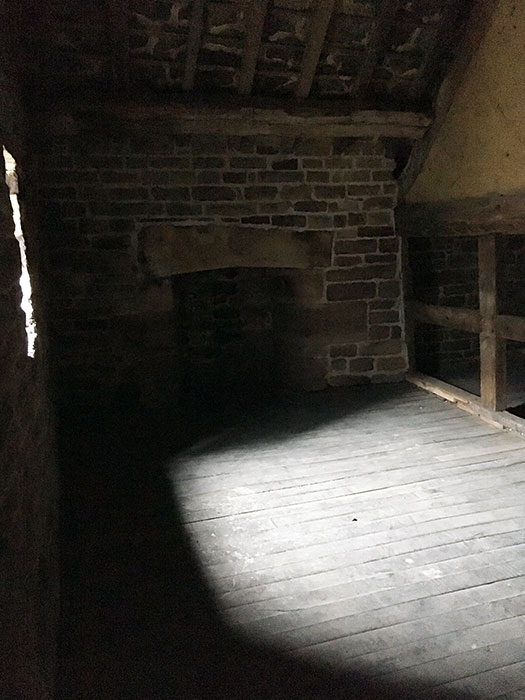
In the attic people used to sleep. I found that fascinating. It must have been cold in the winter and hot in the summer.
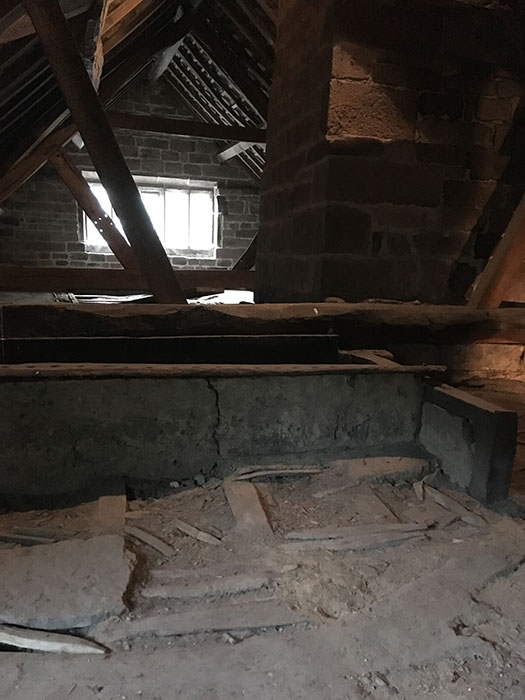
In some parts we were able to see the compacted earth, the same as it would have been on the lower levels of the house.
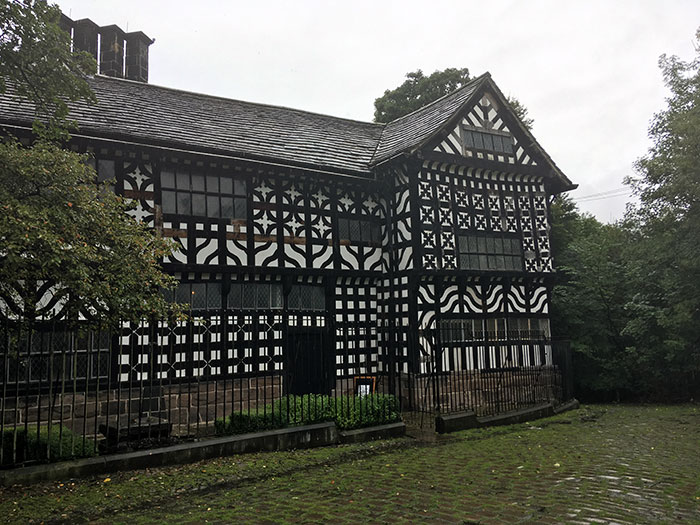
Hall i’th’ Wood Museum is on Green Way, off Crompton Way, Bolton, Greater Manchester, BL1 8AU. There are a few on-road parking spaces.






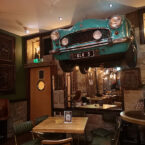

What a beautiful, old house! Great photos too! My pet peeve with house museums are “explanation signs” that are attached to objects, on tables, or on stands of their own in every room. These detract from the experience visually. Having printed brochures, or recorded “tours” with headphones, or live history interpreters on hand, are much, much better. I ant to see old rooms LOOK as they did, as much as possible. That’s the whole point, otherwise put the objects in them – into museums, and turn out the lights!
What a gorgeous looking place! Sounds like the perfect way to spend a day 🙂
This is such a beautiful and well-preserved house! Thank you for taking us on a tour. I had never heard of Samuel Brompton before, do you remember the name of the TV show you watched? I would be interested to know!
Julia x
Sorry, I can’t remember which one it was. I would have wanted to see it again myself.
What a fascinating place with so many interesting things on display. I enjoyed getting the tour along with you – thanks!